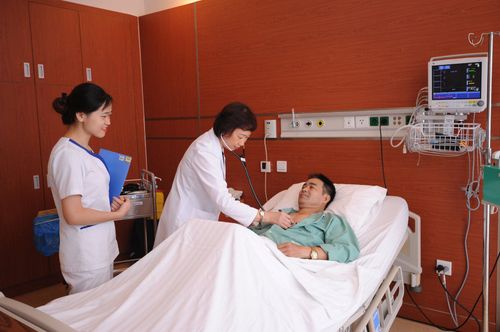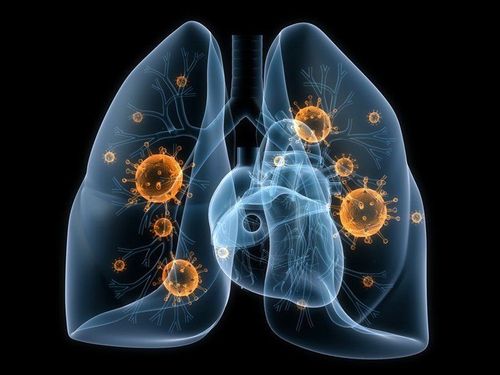This is an automatically translated article.
The article was professionally consulted by Dr. Bui Hanh Tam - Department of Anesthesiology - Vinmec Times City International Hospital.Each person has a different pain threshold, and feels and describes pain differently, which can make identification and treatment difficult. In addition to pain caused by medical diseases, pain after surgery, pain after vaginal birth or caesarean section, the problem of pain is always more concerned because it is an obsession. Understanding that, Vinmec has sought to "manage pain" to achieve the highest and safest treatment effect.
1. What is pain?
Pain is an unpleasant sensation and emotional experience that occurs at the same time as actual or potential tissue damage, or is described in such a way.Physiologically, pain is a subjective, conscious sensation and a reflex that mobilizes defense systems.
Psychologically, pain is an experience valued by individual consciousness. So, the same type of injury but the level of pain varies from person to person.
Pathologically, pain is associated with damage and dysfunction, and is indicative of all disease states depending on the stage.
Pain is a symptom that makes people want to see a doctor, sometimes requiring emergency hospital admission.
Recently, the concept of pain is considered as a disease and needs to be treated at the right time, avoiding consequences that affect not only an individual but also the family and society, not only affecting the health of the family. emotional but also economic and social effects in general.
Medical diseases may be accompanied by pain symptoms. Post-operative, intra- and postpartum pain can be an obsession if pain management is not good. We would like to discuss more deeply the role of "pain control" with the highest efficiency and safety, which has been raised as the top criterion in all specialties at Vinmec hospital in recent years.
2. Classification of pain
Pain is not simply a symptom but involves a complex interaction between the sensory nerves, the spinal cord and the nociceptive regions of the brain.
There are 2 main types of pain: Noncancerous pain and cancer pain. Acute pain is triggered by tissue damage. Its purpose is to warn you of harm and is a response that protects you from further harm.
Persistent pain is pain that persists for 2-3 months after the wound has healed.
Chronic pain is pain lasting more than 3 months of surgical damage. Patients often do not understand why pain persists and need to see a doctor.
Although chronic pain can be a symptom of another disease, it can also be a disease in its own right because of changes in the central nervous system.
Acute pain that is not well managed can lead to chronic pain
Cancer pain can occur at any stage of the disease depending on the type of cancer, the nature of the tumor such as its location, whether Nervous system related or not or pain caused by side effects of cancer treatment itself (radiotherapy, chemotherapy, surgery...)
3. Causes of acute pain
Causes of acute pain include: Pain after surgery; Post-traumatic pain; Post-burn pain; Obstetric pain...
Pain location includes any part of the body described by words such as: Abdominal pain, back pain, neck pain, shoulder pain, neck pain, surgical scar pain, facial pain...
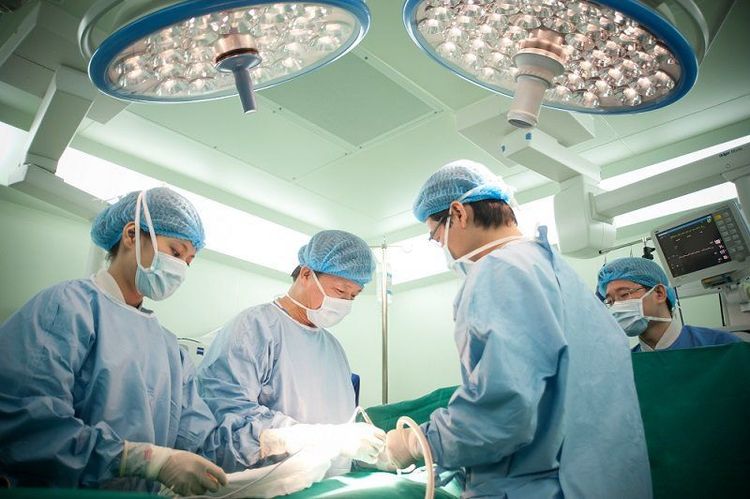
Đau sau phẫu thuật là nỗi ám ảnh của nhiều người
There are many causes of pain, but pain after surgery, especially major surgeries or pain after vaginal birth and cesarean section is an obsession of many people. Understanding that problem, the doctors at the hospital in Vinmec have applied the latest technology not only in Vietnam but also in the world with neuro-ultrasound machines to perform selective anesthetics such as
Spinal plane anesthesia (ESP) under ultrasound guidance Anesthesia of the brachial plexus for the management of normal postpartum pain Lumbar squamous sphincter for pain management after cesarean section Lumbar plexus Selective anesthesia of nerve trunk: sitting nerve, femoral nerve, radial nerve, ulnar nerve... Selective anesthetic techniques for this surgical area provide comprehensive pain relief, without complications , shorten the recovery time, eliminate the risk of persistent pain and chronic pain after surgery. Since then, the patient soon recovered after surgery, returning to daily activities.
4. Why is pain management a "specialty" at Vinmec?
4.1 Vertebral plane anesthesia (ESP) method
When applying ESP, Vinmec has brought a painless surgical experience to heart surgery patients for nearly 2 years and many other surgeries, helping patients to pass the "big surgery" smoothly without pain. . Patients can move early, shorten hospital stay. Positive results at Vinmec have opened up the prospect of applying this anesthetic method in many open-heart surgeries, thoracic surgery and thoracic injuries with rib fractures.In particular, this achievement makes Vinmec the first hospital in the world to announce successful ESP-assisted open-heart surgeries.
This method also helps to effectively manage pain in high-grade abdominal surgery such as liver, stomach, kidney, pancreas surgery...
Some chronic pain, intercostal neuralgia due to acute phase Zona, subacute, this is also a method to help reduce the burden of pain for patients.
See more: Painless heart surgery at Vinmec: Breakthrough in open heart surgery
4.2 Method of epidural anesthesia
For peace of mind when entering a vaginal birth, many women choose an epidural to relieve pain during labor. This technique is performed when a woman has uterine contractions that cause mild to moderate pain. This method allows labor to take place in the most ideal conditions. Accordingly, the mother conserves energy while still keeping the contractions of the uterus to prepare for the process of pushing the baby.
After the epidural is performed, the pregnant woman will lose pain sensation from the high part of the abdomen to the legs, still be able to move her legs, still be aware when there is a uterine contraction and especially still be able to push. to welcome the baby.
Thanks to the epidural, the process of labor turns a new page: The mother can deliver the baby without pain as described by previous generations. The cases of prolongation of labor are usually very few, and the risk of epidural anesthesia for mother and baby is not cause for concern.
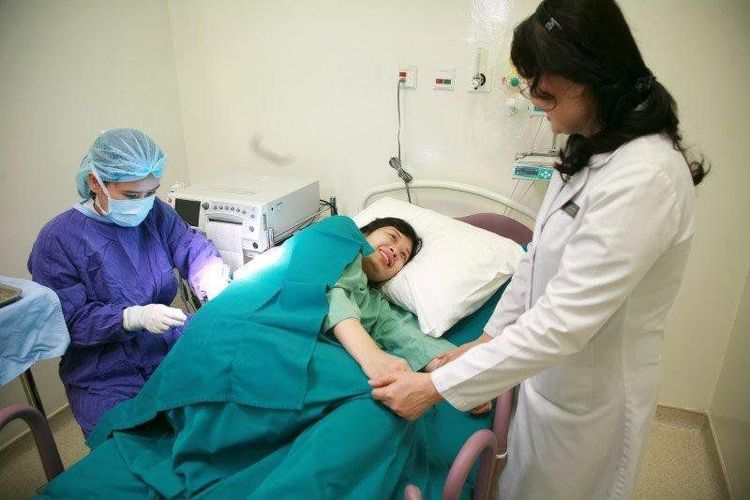
Gây tê ngoài màng cứng an toàn cho cả mẹ và bé.
Vinmec has a team of experienced and professional anesthesiologists who will help pregnant women experience the safest painless birth.
See more: Painless birth in Vinmec - Gentle labor, healthy baby
4.3 Method of anesthesia of the lumbar squamous muscle
For cesarean section, the mother is given spinal anesthesia during surgery and pain relief in the first day after surgery by means of lumbar squamous muscle anesthesia. This is a technique of nerve selective analgesia that governs the incision and contracts the uterus in order to block pain signals before being transmitted to the spine and to the brain, causing post-operative pain for pregnant women.
With long-term experience and with the support of modern ultrasound equipment, Vinmec doctors will find the exact place to numb the lumbar squamous muscle, ensuring safety for the mother.
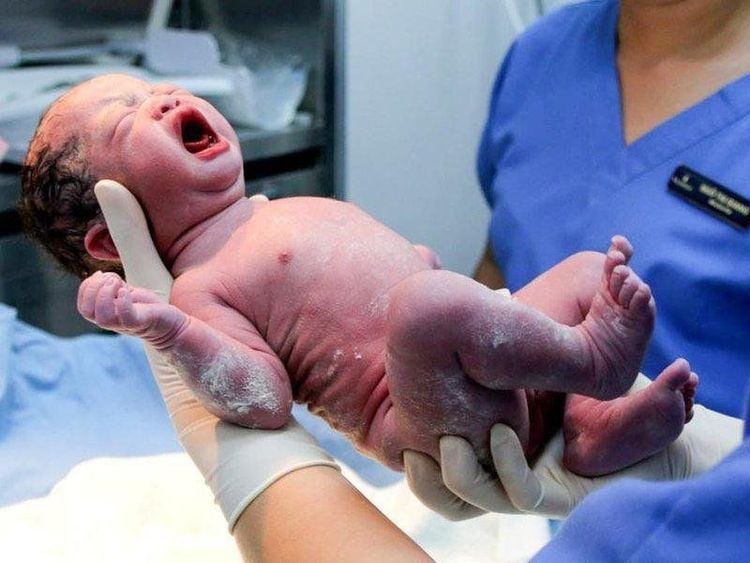
Em bé cất tiếng khóc chào đời tại bệnh viện Vinmec
4.4. Numb nerve anesthesia
In addition to the technique of anesthesia of the lumbar squamous muscles under ultrasound guidance, in obstetrics, Vinmec also implements the technique of pudendal neuroanaesthesia to relieve epigastric and epigastric pain, helping pregnant women experience birth in a safe way. most comfortable, whether it's a vaginal birth or a cesarean section. Thanks to these measures, mothers giving birth at Vinmec can enjoy complete pain relief, quick recovery, early return of bowel movements, early exercise and walking, and no chronic pain. In particular, doctors do not need to use morphine, which limits many undesirable effects after childbirth and after cesarean section such as: Itching, intestinal paralysis, vomiting, nausea, chills, constipation, dry mouth.
This anesthetic technique is also used for low-grade surgery such as hemorrhoidectomy, episiotomy, anal surgery under the guidance of neuro-ultrasound machine to help manage pain completely Best because the anesthetic is selectively applied to the affected area, blocking pain signals before being transmitted to the brain.
4.5. Program to enhance recovery after ERAS . surgery
Enhanced Recovery After Surgery (ERAS) program is a collection of perioperative multimodal care protocols (before, during, after surgery) to help patients recover quickly and soon after surgery. Patients are consulted specifically about ERAS before surgery, so that they can safely participate in the treatment process and post-operative care with medical staff. Patients are optimized nutrition, applied standard anesthetic-analgesia regimen, fast recovery and early mobilization.
Thanks to the robotic surgery technique combined with the program to enhance recovery after surgery, Vinmec Times City International Hospital has created a miracle in cancer surgery: Patients eat immediately after surgery; on the first day after surgery, no drugs, no fluids, exercise at the 6th hour after surgery; On the 3rd day after surgery, he was discharged from the hospital and went home to normal activities.
5. Why should you choose Vinmec for pain management?
Vinmec Times City International Hospital and Vinmec Central Park International Hospital have successfully applied ESP on 96.8% of open-heart surgery patients, bringing outstanding results:
None In cases where an additional dose of morphine analgesia is required during skin incision, breastbone sawing, Significant reduction in the dose of Sufentanil analgesia during surgery Reduces pain severity after extubation, exercise, and extubation No need to use reduced morphine pain from recovery to discharge. No complications of hematoma, hypotension or excessive numbness, respiratory depression, anesthetic poisoning 100% of patients 1 month after discharge from the hospital have no pain/no risk of chronic pain after surgery The 95 % success rate of selective regional anesthetics for pain management is achieved, which eliminates morphine in the regimens of postoperative pain and chronic non-cancerous pain. In addition, the boarding environment at Vimec is very modern and comfortable, the procedures are extremely simple, the service staff attitude is kind and cheerful. In a nutshell, “pain” is not simply a symptom but related to a medical condition and if pain is present after surgery, it needs to be treated. Pain in the surgical wound area is not only very uncomfortable, but it can also delay recovery. So good pain management has a good chance of recovery and choosing a site for good pain management is very important.
In addition, other factors that can help you cope with pain include relaxation, breathing exercises, distractions, and listening to music. Physical therapy can also help relieve pain with exercises in bed, when you get out of bed, and when you walk around.
At Vinmec hospital, with the patient-centered principle, every care and pain management process is always noticed in all specialties with the guidance of leading experts in the world along with supported by the most modern machinery. Treating the disease at Vinmec with the criterion of no pain will help patients recover sooner and return to daily activities such as work, labor, and movement.
Please dial HOTLINE for more information or register for an appointment HERE. Download MyVinmec app to make appointments faster and to manage your bookings easily.




